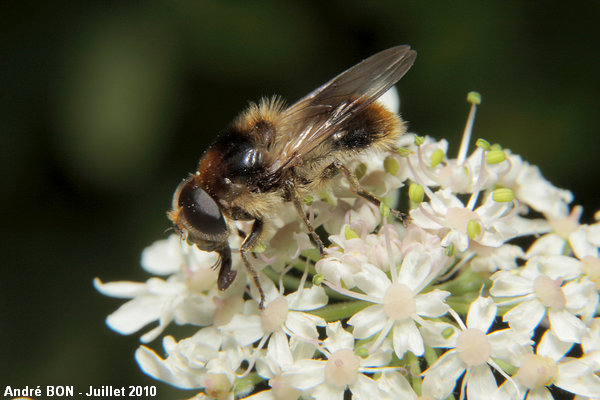

| Cheilosia illustrata (Harris, 1780) |


|
|
Scientific name: Cheilosia illustrata (Harris, 1780) Common name: Other names: Other scientific name: Musca illustrata . French name: Order: Diptera Family: Syrphidae Wingspan : 9-11 mm. Biotope: Flower meadows, track sides, woodland edges, hedgerows. Geographic area: Europe Observation period : April to September with a peak in July. |
Cheilosia illustrata is a hoverfly which mimics bumblebees. It is rather hairy, including on the eyes. You can often observe it with the wings held aligned over the body when it is landed on umbelliferae flowers. It shows a dark area in the middle of the wings and long white hairs near the base of the fore legs and under the scutellum. Though the pilosity is rather variable, you can most often observe a band of black hairs across the thorax and another one across the third tergite. The tip of the abdomen is covered with reddish orange hairs. Leucozona lucorum also shows a dark patch in the centre of the wings. You can tell it apart by its orange scutellum and by its white abdomen base (which is sometimes reduced on some hoverflies). The larvae of Cheilosia illustrata grow in the roots of Common Hogweed (Heracleum sphondylium). |
| [To know more about the Cheilosia illustrata] [Next picture] [Top] |

|
You can clearly see the eyes covered with hairs on this picture. |
| [To know more about the Cheilosia illustrata] [Previous picture] [Top] |

|
The touching eyes indicate a male. |